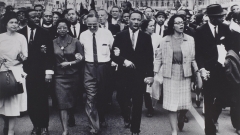Brown University won’t display house linked to Rosa Parks, after dispute
his was the place, Rhea McCauley says, where her aunt Rosa Parks fled after death threats chased her out of Alabama, taking refuge at her brother’s home in Detroit to continue her civil rights activism. This was the place, this tiny house, where McCauley’s 12 brothers and sisters joined “Auntie Rosa” at the dinner table to say grace before Sunday dinner, eating corn and tomatoes and strawberries that McCauley’s father grew in their garden.
Steven Cohen, attorney at the Rosa and Raymond Parks Institute for Self Development, is less sure of the house’s authenticity.
“The truth is, she didn’t stay there,” he said. “It’s a house which Rosa Parks’ brother and his family used to live in. It’s no more Rosa Parks’ house than it is my house.”



